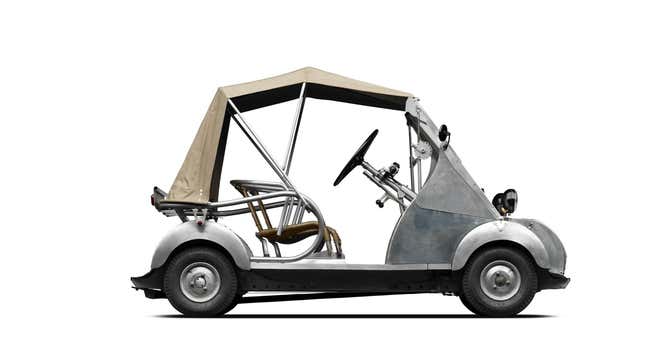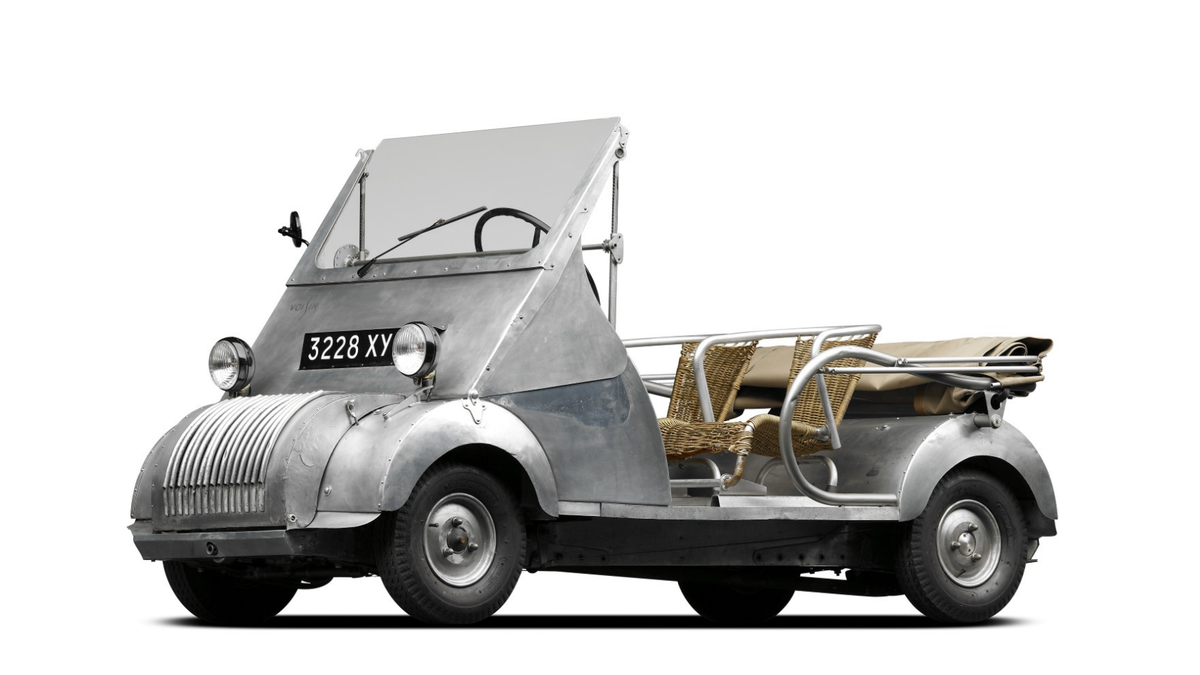Resources in Europe were a bit thin on the ground following the Second World War. Pretty much everywhere got bombed, and the rebuilding of nations takes a lot of time, money, and stuff to accomplish. In the late 1940s automaker Gabriel Voisin put pen to paper drawing up a minimalist transport device to compete against any variety of other scooter-based microcars. It would be significantly less expensive than a Volkswagen, for example, but still shuttle two people in relative discomfort. He called it the Biscooter, as it was roughly the size of two scooters next to each other. Maybe it was the first side-by-side?
This line of thinking in a post-war environment lead to the massive popularity of later cars like the Austin Mini and Fiat 500. Unfortunately Voisin was a little ahead of the curve, as no manufacturers or customers ever appeared for the Biscooter in France, and the project rotted on the vine for a handful of years.
With Francoist Spain receiving a trade embargo from the United Nations, resources in the dictatorship state were even more scarce. With Spain’s relatively low development and already devastating war destruction, the embargo pushed Spain to operate at a much lower economic level than the rest of continental Europe for decades. It was the perfect time to develop a Lilliputian coche para todos. Enter the Biscooter, which would become Hispanicized as Biscúter.

In 1953 Voisin worked a deal with Autonacional in Spain to license the Biscooter design for production as an Autonacional-Voisin Series 100. In the fifty years of Voisin’s existence, the approximately 20,000 units of Biscúter production between 1953 and 1960 were by far the most successful of the brand’s models. The company was previously known for low-volume, high-quality luxury automobiles, and it actually went belly up in 1946. By 1953 Voisin was little more than a brand name licensed in a foreign nation.
Near the end of Autonacional-Voisin Biscúter production, the Spanish state pulled all aluminum shipments from the company in favor of SEAT. Late-production Biscúter were built from steel oil drums delivered to Spain as part of the Marshall Plan.
This particular car, available at Gooding and Co.’s Amelia Island sale in just a couple of weeks, actually predates most of that story as it’s one of Gabriel Voisin’s original prototypes. Number ten of 15 prototypes featured a 125-cc Gnome et Rhone two-stroke single-cylinder engine. The point of an engine that small was to comply with French regulations that determined the car didn’t need a license or insurance to be driven on the street.
This exact car was once part of the now-defunct Mullin Automotive Museum’s collection. There’s no telling what it’ll sell for at auction, though the market for ugly 1940s microcars is admittedly a quite small one. Gabriel Voisin’s personal Biscooter sold in 2009 for around $32,000, so you can use that as a measuring stick.

